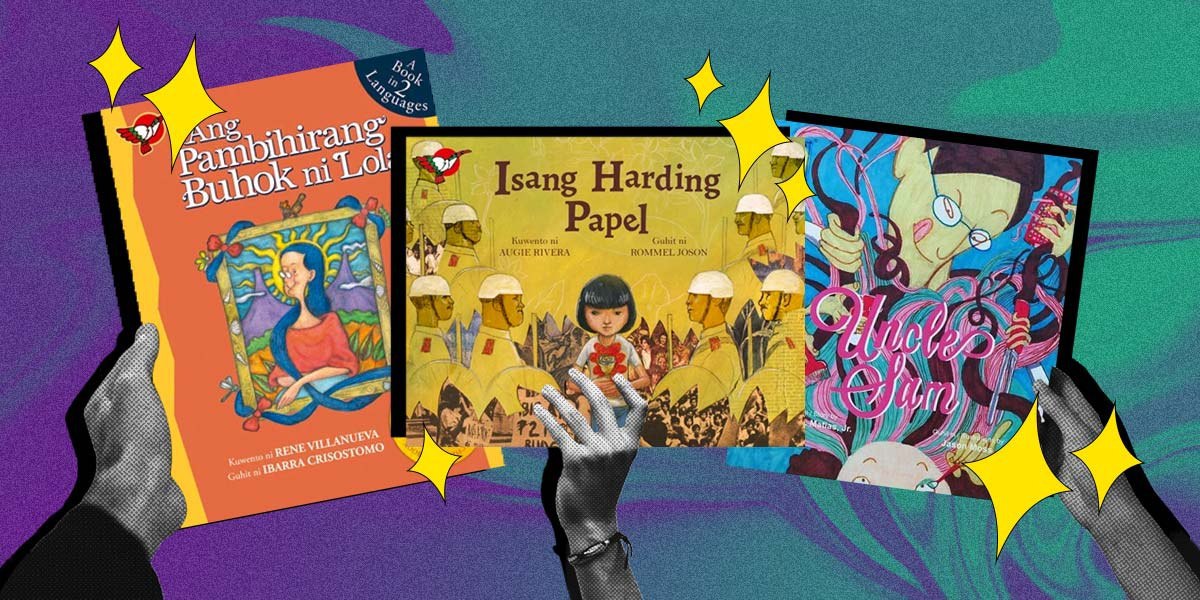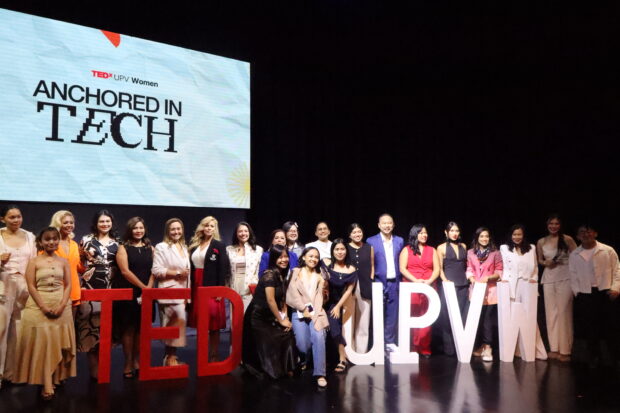Looking at today’s selection of storybooks, a lot of publishers are taking bolder steps in pushing for children’s stories with purpose
You know that feeling when you rewatch a classic film as an adult and finally catch all those jokes and dialogue that flew over your head as a kid? Turns out, you can get the same feeling from reading children’s storybooks as an adult.
I got a pretty decent reading scope as a kid, mostly thanks to my mother who used to buy those thin illustrated storybooks to entertain her painfully introverted tween. Thanks, ma. I guess my introversion wasn’t that bad.
Looking at today’s selection of Filipino storybooks, a lot of publishers are taking bolder steps in pushing for children’s stories with purpose: breaking down social issues and “difficult” topics into colorful stories that children (and even adults) could understand and appreciate.
“Ang Pambihirang Buhok ni Lola”
Written by Rene Villanueva, illustrated by Ibarra Crisostomo
This is one of the first few short stories I’ve read that I still have a copy of. Playwright Rene Villanueva’s tale follows a 105-year-old lola who has legends paying homage to her extraordinarily long and strong hair. Not even science could explain it.
The same hair that everyone was in awe of also happened to save the village from being completely destroyed by raging storms. Lola’s strong locks held down everything and everyone in the village, keeping them safe for 15 more storms. The story pays homage to everyday heroines and to strong Filipino women, especially those who even take the frontline in times of crisis.
“Uncle Sam”
Written by Segundo Matias Jr., illustrated by Jason Moss
From the creator of HIV-focused series “Mga Batang Poz,” this is a story on acceptance (and not merely tolerance) of our queer friends and family. Young Annie is fond of her Uncle Sam, whom she sometimes calls Aunt Samantha. In our younger years, some of us may have asked adults why certain people dress a certain way or asked whether someone was a man or woman, only to be met with awkwardness, dismissive comments or even complete disregard altogether.
“Ang Bonggang-Bonggang Batang Beki!”
Written by Rhandee Garlitos, illustrated by Tokwa Salazar Peñaflorida
It’s no secret that many queer people struggle to maintain family relations once (or even before) they come out—even if acceptance is all they ask for. This story goes two ways: a brave and unapologetically queer boy with a kind heart and a mother who knows her son’s preferences from the beginning and loves him regardless. It’s a story for our queer friends who want nothing more than to be who they really are and for parents who accept their children for who they are and want them to know they’re loved.
“Sandosenang Sapatos”
Written by Luis Gatmaitan, illustrated by Beth Parrocha
Karina’s father is the best shoemaker in town, so much so that her classmates always praise her pretty and crafted-with-love shoes. Her younger sister Susie, born without feet and bound to her wheelchair, could only dream of wearing their father’s creations. Every time her birthday approaches, Susie literally dreams of shoes in different colors and designs, but she knows she could never wear them. While a heartwarming story on family, it also touches on how society perceives people with disabilities.
“Isang Harding Papel”
Written by Augie Rivera, illustrated by Rommel Joson
Even children’s storybooks are capable of telling true accounts. This short story follows Jenny, a child of a political detainee during the Martial Law years. Jenny’s mother Aling Chit joins a protest rally and ends up in jail, with Jenny visiting her often. During Jenny’s weekly visits, Aling Chit gives her flowers crafted from old newspapers.
This storybook was a collaboration between Adarna House and the EDSA People Power Commission in an effort to educate young people on one of the most controversial eras of our country. Relevant material like this aims to help young audiences understand complex events in our history.
“Kayumanggi”
Written by Ms. Christine Marie Lim Magpile, illustrated by Jonathan Rañola
We really don’t deserve dogs, even fictional ones. This story is about an aspin named Kolate, which was adopted by a young boy named Pepe. They grew up together, even when Pepe joined the revolution. Kolate later proves his own bravery to earn the new name “Kayumanggi.”
Not only did Kayumanggi take part in a revolution, he himself represents brave Filipinos. It’s undeniable that many foreign influences have conditioned us to think otherwise of our skin color, but “Kayumanggi” teaches us that our rich identity and history is something to be proud of.












































